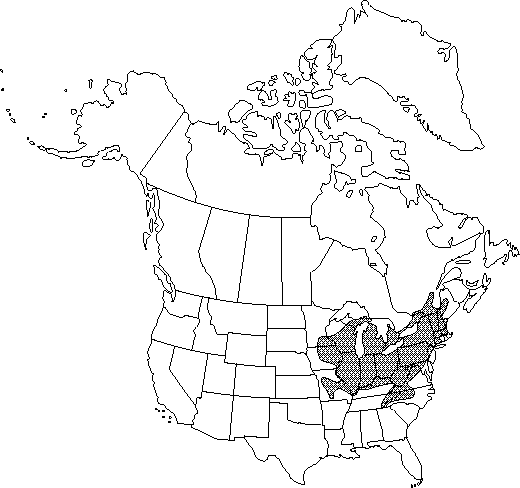Difference between revisions of "Dicentra canadensis"
Repert. Bot. Syst. 1: 118. 1842.
FNA>Volume Importer |
FNA>Volume Importer |
||
| Line 58: | Line 58: | ||
|publication year=1842 | |publication year=1842 | ||
|special status=Endemic | |special status=Endemic | ||
| − | |source xml=https://jpend@bitbucket.org/aafc-mbb/fna-data-curation.git/src/ | + | |source xml=https://jpend@bitbucket.org/aafc-mbb/fna-data-curation.git/src/8f726806613d60c220dc4493de13607dd3150896/coarse_grained_fna_xml/V3/V3_1085.xml |
|genus=Dicentra | |genus=Dicentra | ||
|species=Dicentra canadensis | |species=Dicentra canadensis | ||
Revision as of 17:14, 18 September 2019
Plants perennial, scapose, from short rootstocks bearing yellow, globose bulblets. Leaves (10-)14-24(-30) × (4-)6-14(-18) cm; petiole (5-)8-16(-22) cm; blade with 4 orders of leaflets and lobes; abaxial surface glaucous; ultimate lobes linear to linear-elliptic or linear-obovate, (2-)5-15(-23) × (0.4-)2-4 mm, usually minutely apiculate. Inflorescences racemose, 3-12-flowered, usually exceeding leaves, (10-)15-27(-33) cm; bracts ovate, 2-5 × 1-3 mm. Flowers pendent, very fragrant; pedicels (2-)3-7(-14) mm; sepals triangular to ovate, 2-4 × 1-2 mm, apex acuminate; petals white; outer petals (10-)12-16(-20) × (2-)4-5(-8) mm, reflexed portion 3-5 mm; inner petals (10-)12-15(-18) mm, blade 2-4 mm, claw linear-elliptic, 5-9 mm, crest prominent, ca. 2 mm diam., exceeding apex by ca. 2 mm; filaments of each bundle distinct nearly to base; nectariferous tissue forming 0.5-1 mm spur oriented vertically; style 4-7 mm; stigma shallowly 2-horned with 2 lateral papillae. Capsules ovoid, attenuate at both ends, (5-)9-13(-17) × 3-6 mm. Seeds slightly reniform, very obscurely reticulate, elaiosome present.
Phenology: Flowering early–late spring.
Habitat: Deciduous woods, often among rock outcrops, in rich loam soils
Elevation: 0-1500 m
Distribution

Ont., Que., Conn., D.C., Ill., Ind., Iowa, Ky., Maine, Md., Mass., Mich., Minn., Mo., N.H., N.J., N.Y., N.C., Ohio, Pa., Tenn., Vt., Va., W.Va., Wis.
Discussion
See discussion under the following species.
Selected References
None.